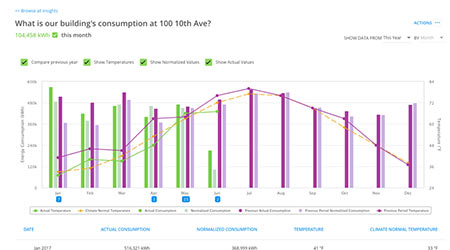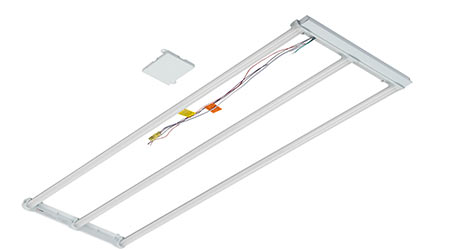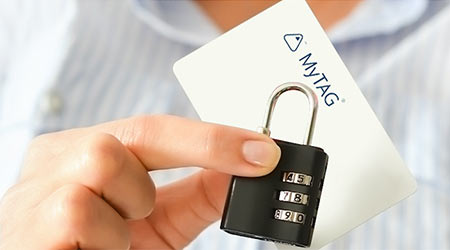« Back to Facilities Management News Home
« Design & Construction
NFMT Day 2: News and Highlights
NFMT Day 2 Wrap-Up Video
Lots of highlights from a successful second day at NFMT:
Knowledge Cafe: First Cost vs Life-Cycle Cost
(2:30 pm) Facility managers well know this battle: First cost vs life-cycle cost. Alan Whitson, president, The Corporate Realty, Design, and Management Institute, took on this thorny question in a Knowledge Cafe session. Whitson suggested it doesn't have to be an "either/or" question, but instead provided several tips -- most notably: Consider total cost of ownership as the most valuable metric because it incorporates both. Still, design, construction, financial, and facility management all have different opinions about what constitutes an appropriate total cost of ownership. If a new construction project is on the table, it's incumbent upon facility managers to keep lines of communication open regarding product selection. Architects don't often keep in mind what it costs to operate a building, said Whitson. So facility managers must help them keep that idea front of mind.
Five Current Methods of Understanding Space Utilization
(12:00 pm) How well do you know how occupants use your space? If your answer is "not very well," Dan Lorenz of AMS CAD + CAFM Solutions presented five strategies you should consider to get a better handle on your space utilization data.
1. Badging Systems - The advantage of using badging systems to understand how people are coming in and out of a facility is that it's a system that already exists. Therefore using it to determine space utilization is easier than starting from scratch with a new system. Badging systems are best for understanding employee use at a facility level -- the number of employees actually in the building vs. the number working remotely on any given day, for instance. But that snapshot-in-time nature is also a con -- it only allows a certain amount of depth of data.
2. LED Lighting Sensors - Best for meeting rooms, lighting sensors can tell you how often and for how long a room was used. This can help you get a better sense of whether some conference rooms are underutilized and could possibly be repurposed.
3. People Sensors (cameras) - This one is a little tricky - people will be constantly worried about whether Big Brother is watching. But as with any of these strategies for understanding how your occupants use space, the key is making sure they understand why the technology is being used (not to spy on them!) and that their privacy is protected. For these people-sensors, which are used at the entrance to a room, they can give an accurate count of how many people are in a room at any one time. In other words, it provides live occupancy numbers for any room for which the people sensor is used. One attendee mentioned using this technology outside of bathrooms near cafeterias in his facilities, so that people nearby at their desks could check the web portal to see if restrooms were full before wasting time waiting in line. Lorenz said he hadn't heard of that application before, but if it worked for that facility, then why not? The downside to this technology is that it can be used on a room-level only, and there may be some privacy concerns from occupants.
4. Furniture Sensors (at desk or chair) - These sensors are great in office environments that don't have assigned seating. Facility managers can get very accurate utilization data to a very detailed level (there's virtually no limit to the analytics possibilities, said Lorenz) about how people are using office space. This type of sensor is best for getting "indisputable" data about how people use workspaces, said Lorenz. And this analysis can help determine if an organization has too much or too little space.
5. Bluetooth Beacons - This technology is already being used frequently in retail settings. When you walk into a store, the beacon picks up your smart phone's presence, and you get a notification about a sale or a coupon code because you've opted in to these offers with the retailer's app. For facilities, the Bluetooth beacons can be used in, say, a cafeteria so facility managers can better understand how and when occupants are using those facilities.
Why Should You Integrate Facility Data?
(10:30 am) This year, NFMT has a new data track of education sessions. A Wednesday morning session by Robert Lambe of Facility Issues explained why integrate facility data is so important. Facilities generate so much data, but it's often siloed, rendering it largely useless. Lambe explained the most important reason for integrating facility data:
But it's not just about ease. More robust data integration allows for better data analysis, models, and forecasts, Lambe explained. What's more, integrated facility data makes it easier to present data in financial terms, a critical component in speaking the language of the C-suite.
But Lambe offers a word of caution: Integration doesn't change your data. That's a good thing. But also, it means that if your data is terrible, your integration of terrible data will be equally terrible. Integration won't magically change your data into something usable.
Lambe also discussed the four V's of data when considering the scope of an integration: Volume - the amount of data. Velocity - the frequency which data is collected. Variety - how many different sources of data do you have. Veracity - how accurate is your data.
Day 2: The Excitement is Building
(8:00 am) Who's excited for NFMT Day 2?
More From 3/27/2019 on FacilitiesNet











